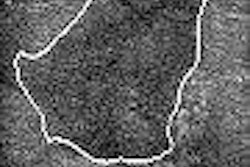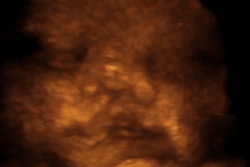An endometrial mass is the most sensitive finding for diagnosing retained products of conception (RPOCs), according to an article in the September Journal of Ultrasound in Medicine.
"If no mass or endometrial fluid is seen and the endometrial thickness is less than 10 mm, RPOCs are extremely unlikely," wrote a research team from Brigham & Women's Hospital in Boston and Toronto Western Hospital in Ontario.
To identify the sonographic features of RPOCs, the study team retrospectively reviewed cases of suspected RPOCs referred for pelvic sonography between September 1994 and July 2001 for a total of 163 cases (JUM, September 2005, Vol. 24:9, pp. 1181-1186).
Indications for pelvic sonography included vaginal bleeding in 82 cases (50%), pelvic pain in 77 (47%), and fever in 55 (34%). The gestational age ranged between 14 and 43 weeks, with a mean age of 37 weeks. The sonographic exam was performed between 0 and 95 days postpartum.
Pelvic ultrasound was performed initially from a transabdominal approach, and as needed, from a transvaginal approach, according to the researchers. The grayscale and color Doppler ultrasound studies were performed with a 3.5- to 5-MHz transabdominal transducer, a 5- to 7-MHz transvaginal transducer, or both on a 128XP system (Siemens Medical Solutions, Malvern, PA) or with 2.0- to 4.0-MHz and 2.6- to 6-MHz transabdominal transducers, a 5- to 8-MHz transvaginal transducer, or both on a Sequoia 512 scanner (Siemens Medical Solutions).
The exams were reviewed retrospectively in conference by two radiologists, blinded to the clinical outcome.
Of the 163 patients, 36 underwent surgical intervention, 28 of whom had RPOCs. The remaining patients were followed clinically. The researchers discovered that the endometrial mass was the most sensitive (79%) and specific (89%) sonographic feature for RPOCs.
"The isolated finding of either complex fluid in the endometrial canal or a thick endometrium measuring greater than 10 mm had low sensitivity, specificity, and negative and positive predictive values," the authors wrote. "In fact, a thickened endometrium was actually seen more often in the absence of retained products than in the presence of retained products (p = 0.045)."
None of the patients with RPOCs had normal sonographic findings, which were defined as an absence of an endometrial mass or complex fluid and an endometrial thickness of less than 10 mm.
In other findings, color Doppler flow was detected in the endometrium somewhat more often when RPOCs were present (75%) than in the absence of RPOCs (40%).
"Our study shows that, although an endometrial mass is the most sensitive and specific sonographic finding for diagnosing and excluding RPOCs, retained products are present in only slightly more than half the patients in whom an endometrial mass is identified," the authors concluded. "However, RPOCs can be excluded with confidence in the absence of suggestive sonographic findings."
By Erik L. Ridley
AuntMinnie.com staff writer
September 8, 2005
Related Reading
Ultrasound supports conservative treatment of postconception symptoms, April 27, 2004
Copyright © 2005 AuntMinnie.com




















